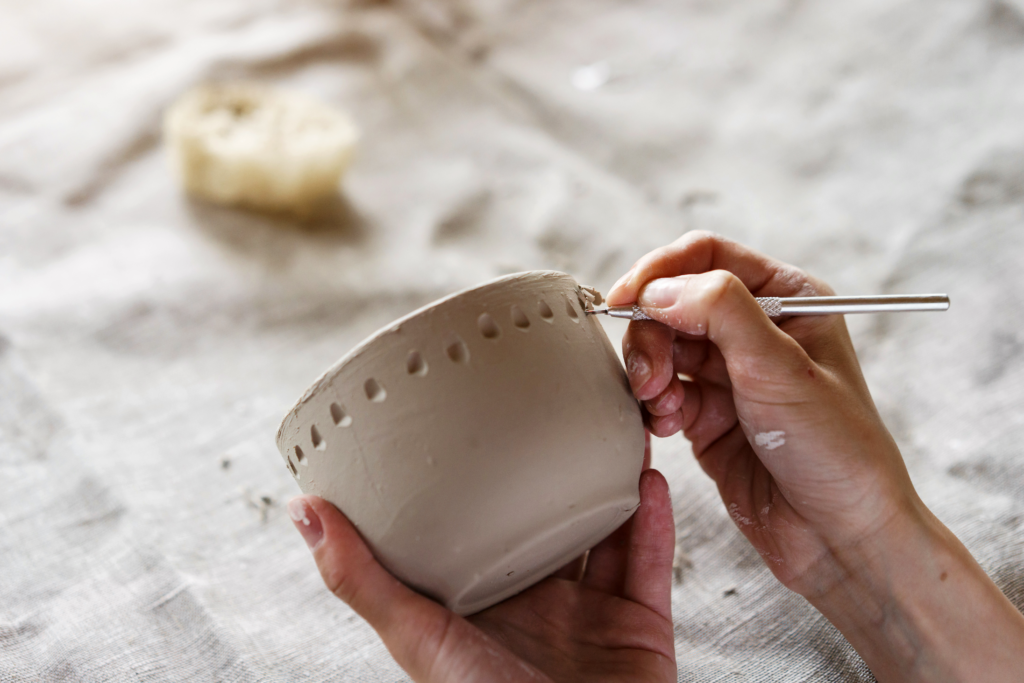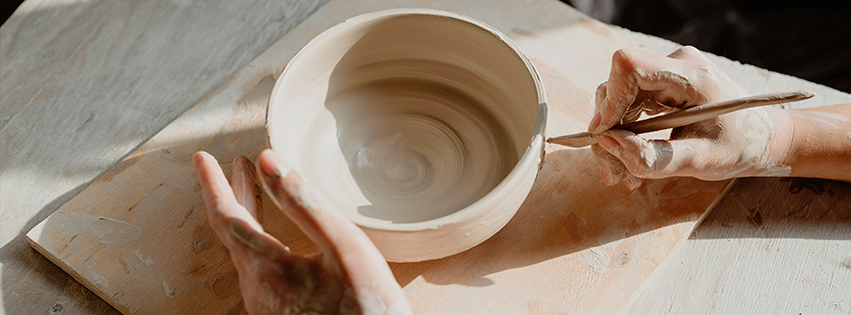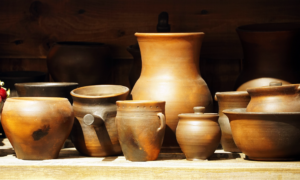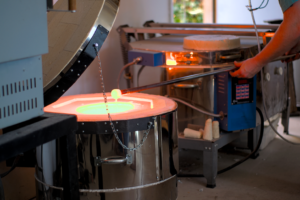Most clays contain several different types of clay minerals with different amounts of metal oxides and organic matter; this is what sets the different types of clay apart. Molding clay includes earthenware, stoneware, ceramic, and porcelain clay. All these clays require the use of a kiln to cure. Keep reading to learn more about kilns for molding clay.
Firing clay is the most critical part of the ceramics process because it is the one thing that gives clay durability and stability, making it functional. Typically, pieces made from molding clay are fired twice: the first time being called bisque fired and the second round, glaze fired.
The purpose of bisque firing is to turn greenware into a durable, semi-vitrified porous stage where it can be safely handled during the glazing and decorating process. It also burns out organic materials in the clay. After adding glazes and decorations, pieces are fired once again to permanently set the colors in place and make the glaze have a smooth, glasslike effect.
Loading a bisque kiln is a simple task, but there are some rules to follow. It is recommended to fire full loads to take advantage of conduction heating but also to save electricity. All pieces should be bone dry before introducing them into the kiln. If the work is cool or cold to the touch, you can be sure that those pieces are not bone dry yet.
All pieces must be handled very carefully at this stage because they are extremely fragile. Since firing a bisque kiln means pieces are unglazed, it is possible for them to touch each other. When firing a glaze kiln, pieces must not touch each other, or else glazes will fuse together.
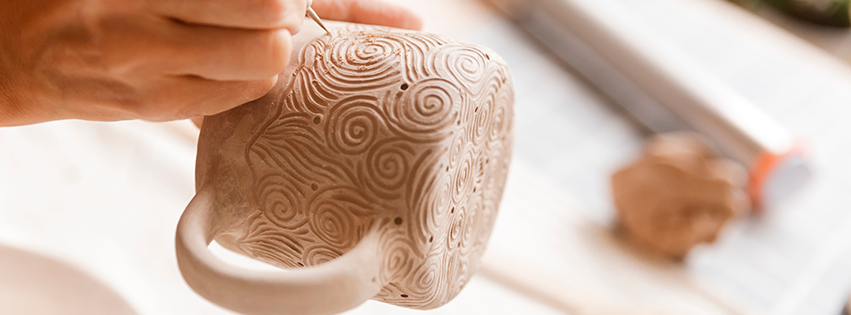
How to mold clay?
Working with molding clay can be as intuitive or precise as you’d like your piece to be. Depending on the minerals added to your mix and the amount of water involved, ceramic clay can be worked as a paste or even as a liquid. For molding, achieving a dough-like consistency is recommended.
Clay Molding Techniques
Basic techniques:
The 3 most basic techniques you can use to mold clay are hand building, slab building, and coiling.
- Hand-building:
A very self-explanatory method, it means using your hands to form an object out of clay. It is the most intuitive, free version of molding clay, there are no rules when it comes to hand building. It’s only downside is that precision, symmetry, and uniformity are much harder to achieve when using this method.
- Slab Building:
Slabs of clay are rolled or pounded out, either by hand, with a slab roller or rolling pin, and then used to construct objects or vessels. These slabs can be used from the wet stage up through the leather-hard stage, depending on the desired result.
There is a possibility to embellish the slabs with surface designs or textures prior to construction because it is easier to create these effects when you apply them on a flat surface rather than after a piece is made and it has volume.
- Coiling:
Coils of clay are rolled out and are built upwardly as a spiral. With each coil being added, another will be joined below, creating layers upon layers until a specific wall height and profile are reached.
More advance techniques
After these three methods, more advanced techniques may be learned and combined to produce the desired designs. Other clay molding methods include:
- Throwing:
A manual or electric pottery wheel will be used to center a ball of spinning clay, it will then be opened into a vessel, then lifted and shaped on the spinning wheel to produce a symmetrical vessel. Textures, decoration, alternative shapes, spouts, and handles for cups may be added for aesthetic and functional purposes.
- Extruding:
This technique uses an extruder, a tool with a plunger that forces wet clay through a tube and out through a die at the end of the tube, effectively squeezing the clay into a shape that is determined by the die. Since this technique developed from industrial processes, it is ideal for large production batches to ensure uniformity.
- Slip Casting:
This technique involves using specially designed molds that you pour liquid clay into so that it forms into the shape of the internal outline of the mold. After being poured into the mold, clay is left to sit for a while, so the mold can draw some of the water from the clay, causing a thin layer of more rigid clay to take the shape of the mold.
The excess slip, or liquefied clay, is then poured out of the mold and set aside to dry. The mold is opened only after it has sat for enough time, and the hollow clay form is removed. Once removed, the seams from the mold are softened with the help of manual tools, and the piece can further dry until it is ready to be bisque fired.
What to consider before buying molding clay?
Molding pottery or clay may be mixed on your own or it may also be purchased ready to be worked. The main difference between these two options will be the price point and the amount of work it takes to have your clay ready to mold.
If you make your own mixtures, you can personalize the proportion of minerals according to the properties they have and how they will aid your designs. However, the process of kneading is hard work, and it takes a while to master so that there are no air bubbles trapped in your clay.
If buying wholesale, purchasing different dry clay materials might be more cost-effective in the long run. When purchasing clay that is ready for pottery molding, you might be looking at a higher cost upfront, but it is compensated by the fact that you don’t need to spend any time kneading and you’ll be able to go straight into molding your pieces.
Arts and crafts stores are likely to sell ready-to-use molding clay, while pure minerals might be found through specialized pottery retailers. It is important to consider the properties your pieces need to have to select the right kind of molding clay for your projects. For beginners, a few trials with ready-to-use clay may be ideal so that more time is spent practicing molding techniques.
